MIBS 2013 Raymarine: Dragonfly, gS-Series, Evolution AP & much more!
Raymarine was a little slow getting their Miami press releases out, but then again they have a LOT to talk about. And even with the six releases you’ll find at that link, they left out what I think is a significant move: the “coming soon” Lighthouse 6 software release for all a-, c-, e-Series multifunction displays — as well as the new gS glass bridge MFDs — will include support for Empirebus NXT digital switching and distributed power technology. With Ray’s endorsement, the fully integrated bridge just got a little more real…
In the Miami booth exhibit seen above you could use Ray screens to switch lighting scenes, check tank levels and even control a hatch lift over N2K, and of course much more integration is possible. Note, for instance, how two of the demo Empirebus modules have antennas; one connects wirelessly to those wall switches and the other supports GSM cellular for off-boat monitoring. It will be nice if Ray’s digital switching support eventually includes device labeling — so that the screen below could maybe say “Starboard Engine Hatch Lift” instead of “Actuator” — but that seems more possible now that Edition 3.0 of NMEA 2000 (PDF) includes a standard Label message.
Raymarine’s move into digital switching was particularly timely as I also got an impressive tour of BEP CZone installations in high-end production boats — some with Simrad integration, some without — and we also saw how Garmin’s new 8500 Black Box has a dedicated N2K “House” port. I suspect that Miami 2013 marked a major turn in the adoption of integrated digital switching. But I digress already, and my head’s still spinning from all I saw at the show. Let’s take a look at what Raymarine actually announced…
Perhaps Ray’s most minor news is that there will soon be versions of the a-Series MFD seen above with WiFi built in, so that it too can be viewed and controlled with Ray’s iOS and Android apps. Incidentally, since I first wrote about the a-65 and -67, I’ve had a chance to test one in the lab and will soon see how well it networks here on the boat in South Carolina. I still think it’s a remarkable mini-MFD that will find uses on big boats, and it was interesting to learn how Raymarine took the same high-bright 5.7-inch screen in an entirely different direction with its Dragonfly Sonar/GPS. Unlike the a-Series, Dragonfly is completely unconnected — no Ethernet, no NMEA 2000, not even NMEA 0183 — and (partly as a result) it has a very simplified user interface that’s quite unlike the common interface Ray has created across all the lower case alphabet series…
What’s special about Dragonfly (besides a thankfully easy name) is that it offers regular fishfinding plus hi-res downscanning, both CHIRP-assisted, along with chart plotting all for $650 retail (that’s without charts, but with Ray’s unusual transom transducer). It’s a unique and reasonably-priced feature bundle that just earned Dragonfly an NMMA Innovation Award from by BWI colleagues. (Charlie Doane covered the judging process on the SailFeed “blog garden” which Panbo will soon join). But it also earned an unusual amount of derision from the competition, as in “That couldn’t really be CHIRP!” and “No way they can get that resolution from at 350kHz!”
However, I don’t think the critics have yet seen Dragonfly in action, like I did briefly on Biscayne Bay. My photos don’t do the screen justice but you can see above how the 1.4 degree downscan beam, which covers 60 degrees side to side, imaged the protective piling under that bridge…
And when we motored close to that fixed nav aid seen above, downscan revealed details of its concrete base and even details of two bait fish groups that you might expect to only image with the color fishfinder’s 25 degree conical beam (at 200kHz). It seemed darn impressive to me, and here’s hoping that Ray’s Chirped downscan can be extended into the wider side imaging I so enjoy for gunkholing…
So did Garmin and/or Raymarine know that the other was going to introduce “glass bridge” style MFDs in Miami, or were they both inspired by the Furuno TZT introduced last year? At any rate, say hello to the Raymarine gS Series. They are 9-, 12-, and 15-inch MFDs — black boxes coming? — that are like e-Series but with goodies like pinch-to-zoom multitouch and triple Raynet (Ethernet) ports with POE ready to power the IP cameras I’m sure Raymarine will offer eventually (as explained here). The gS MFDs also have an HDMI video out port and two standard video inputs. One of the latter could be used for the new T200 fixed thermal cam Ray also introduced, and which will start at $3,500…
The gS Series won’t be out until May and they still aren’t priced, but note that the accessory keypad seen above will also work with a-, c-, and e-Series MFDs, one or many. Note too that there will be landscape and portrait versions, as seen in my show photo, and they network via Ethernet, as does Garmin’s new GRID. Do we have a trend here or what?
And that’s not all. The product pages aren’t up yet but according to the press release the new Ray260 black box VHF will support three remote stations, includes STng/N2K system integration and will support DSC vessel plotting as well as something called Digital Voicemail “which allows a 15 second voice message to be pre-recorded and sent automatically to another DSC-equipped vessel”. “It can also be used to record incoming voice messages or alerts of up to 90-seconds in length,” which sounds like a desirable ‘rewind’ feature, and, yes, there will be a second Ray260 model with an AIS built in…
Finally, Raymarine previewed the Evolution autopilot system that will debut in June. Again only the press release is online but, holy cow, an all-in-one STng/N2K-powered 9-axis heading sensor and course computer offering “Precision monitoring of heading, pitch, roll, and yaw…dynamic accuracy to within 2 degrees in all conditions…Flexible installation…above or below deck…Automatic optimal boat response in all sea states…Selectable modes emphasize comfort, economy, or accuracy.” And I’ll add that discussing Evolution had one Ray manager/engineer nearly jumping up and down with excitement.
They promised they’d have a lot of interesting new products in Miami and they did not exaggerate.


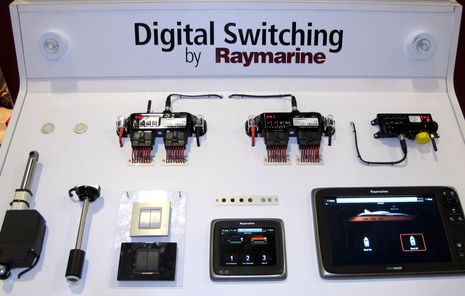
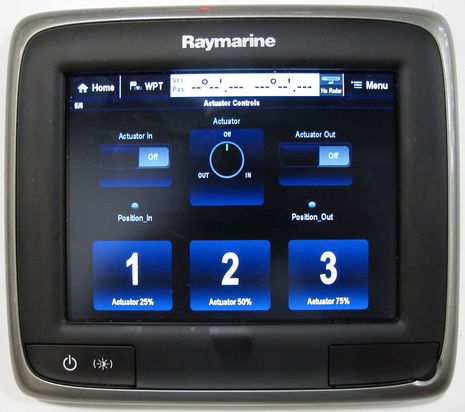
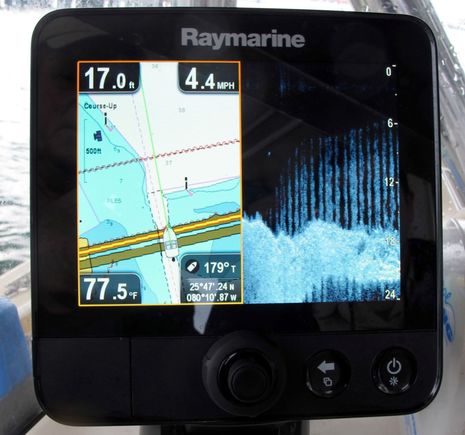
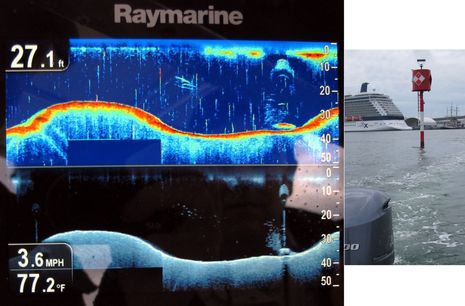
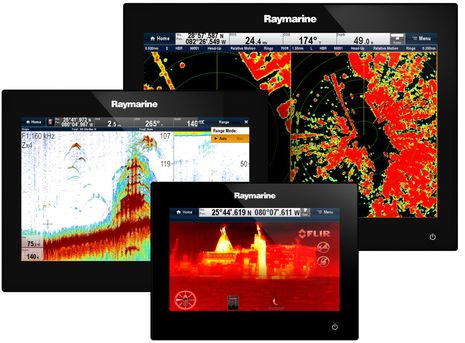
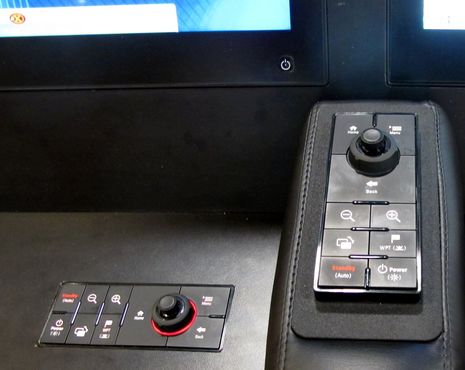
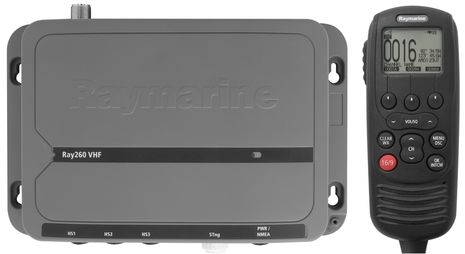
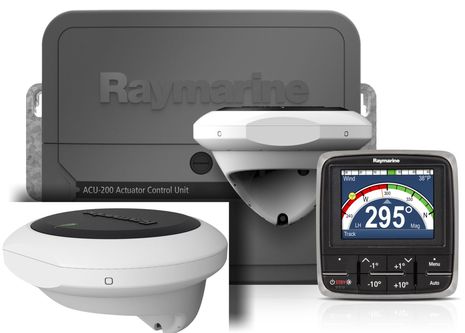
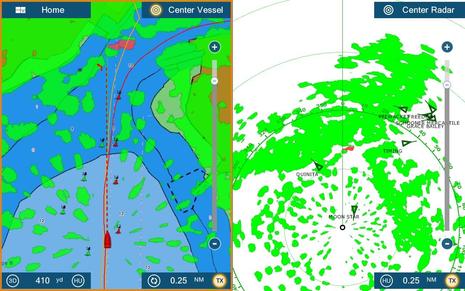
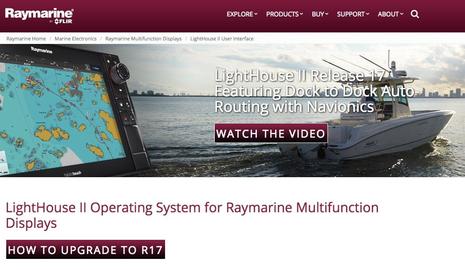

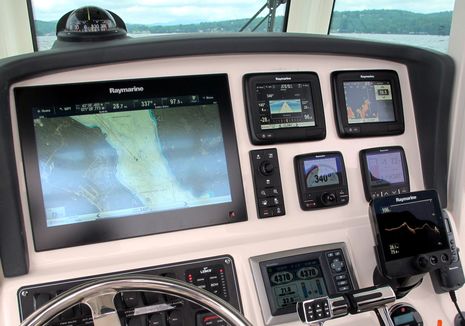








Just a comment on the EmpirBus NXT system. I had it on a Hallberg-Rassy 54 and sailed it over 12’000 last year. My experience is that the system is not ready for primetime.
I had a large number of problems with the system including random complete shutdowns (and yes… at 02:00 mid-Atlantic). When I left for the boat for a while sometimes it shut off taking the 24v fridge systems offline (thus ruining my food).
During lightening storms in the area (not lightening hits, just lightening in the distance), the lights would flash on/off randomly around the boat and in one case one of the modules (very expensive to replace by the way) decided to fuse taking the entire system offline too. I had a spare but if not, you lose all 24v systems onboard. There is no manual override so you are TU.
The system can not be trusted in my opinion. I worked hard with the Trigentic team in Sweden to get all the problems resolved and they did an admirable job of supporting me however, in the end, it was a system that was too unreliable.
All the gee-whiz-can-be-programmed-and-hooked-up-to-anything stuff wasn’t worth a darn when it crapped out on you at the worst time. Electronics are wonderful but depending on them for life-safety at sea is no something I would trust to the EmpireBus system.
My next boat has standard circuit breakers and I won’t look back…
Thanks, Art. You seem remarkably restrained given your experience. And I appreciate that you also commented on the old Empirebus entry and that’s where I’d like to respond in more detail. Whereas this entry attempts to cover so many new Raymarine products, I wouldn’t like to see the comment section dominated by discussion of another brand.
Agreed Art, very restrained. This is where Apple got it right. Fewer features that work very smoothly and reliably often creates a better overall product. That same principal is even more true on a boat where the glitches may matter much more.
On the raymarine items I’m probably most interested in hearing more about the autopilot. In contrast to a lot of the fun electronic doodads on a boat, I find the autopilot is often “mission critical” and this one sounds interesting! Especially the “modes”, as I often have different desires. Light air, relaxing slow sail with crew in cockpit, dial down the corrections. I’ve also found that a silent autopilot can get away with a lot more than a noisy one! That argues for a ram below rather than a wheel mounted add-on which I’ve found are noisier.
Evolution autopilot system:
– What’s inside the heading sensor ?
– I guess no GPS, as long as they say: “installation below deck” ?
Rolf, we may never find out exactly what’s in the Evolution EV sensor but I doubt that GPS has anything to do with it. But I did find more product information:
http://www.raymarine.nl/view/?id=7008
Was there any talk in Miami of Lighthouse 6 allowing wi-fi connectivity with an existing ship’s SSID?
No, but I didn’t ask (as I should have 😉
I’m curious if Evolution has a “shadow drive” type feature? In the Pacific North West we are always log dodging so the convenient dis-engagement and re-engagement of the autopilot would be a big bonus for me.
Half of the time I am asked to program the “shadow drive” off. Captains get tired of the 5 button pushes that has them going through two menu screens JUST to re-engage the AP after grabbing the steering wheel avoiding countless crab pots. This is mandatory if you are following a waypoint from a source other than a Garmin plotter.
I don’t understand, Boater; when I’ve used Garmin’s Shadow Drive, you just held course for a bit and it would re-engage. Are you talking about returning to a “Nav” course?
Adam, I think Raymarine would have mentioned a Shadow Drive style feature if they had it. And they probably could have it except for the patent protection.
However, in Miami I did see a bit more of what Furuno calls the Safe Helm feature of its AP. I wrote about the preview over a year ago — http://goo.gl/NH5rF — but now it’s almost ready for prime time.
Where Garmin just senses human force applied to the hydraulic line, Furuno (and partner Accusteer) sense which way you turn the wheel. Thus they not only get a shadow drive like feature without violating Garmin’s patent (they think) but they can also use the system for power steering. I didn’t actually get underway with it, but I did see a triple outboard install including all the ways Furuno lets you tweak the system. Very impressive…but Furuno has a patent on it so we may not see it elsewhere.
Ben-
Whenever a waypoint is sent to the GHC10 (from any other plotter than Garmin), you must enter into the menu and activate the GHP10 AP to “goto”. It is the only way to tell the GHC10 to do so. It takes the process I mentioned above.
When you’ve done that and the AP is now on it’s way to a waypoint, if you steer around a crab pot, the AP (GHC10) needs told all over again. There is no single button action to re-initiate the AP.
I have to add, I am a HUGE fan of Accusteer. They are my goto AP pump.
Have posted more info on Evolution Autopilots on our site
http://www.hudsonmarine.co.uk/index.php?module_display=41&pid=154141
since a huge slice of Raymarines markets is electric linear drives, implementing shadow drive on those systems is much more complex.
Dave
Bummer there is still no talk of broadband, FMCW RADAR from Raymarine. I guess I’ll have to go the way of Navico.
Further to the Empirebus announcement. How come after two years we still have no NMEA PGNs for digital switching. Shades of the AIS saga
Dave
Evolution autopilot looks nice. Hopefully Raymarine will have taken advantage of common cellphone sensors so that price can be kept low.
An example is the electronics in radicontrol quadcopters .
3-axis gyros MPU-6050
3-axis accelerometers MPU-6050
3-axis magnetometer HMC5883L
Barometric pressure sensor for altitude
5 or 10Hz GPS module uBlox LEA-6H
All for 250$ in ardupilot. Add 200$ for a nice watherproof box and all should be set 😀
Maybe use 3 GPS modules 70$ each and make a nice GPS compass…
You can’t make a proper compass from multiple GpS units. It’s not accurate enough to determine position while not moving. For that you a different method using the phasing of the GPS signals
Dave
The 3-axis accelerometer MPU-6050,
3-axis magnetometer HMC5883L, 3-axis gyro, Barometric pressure sensor for altitude and GPS module are good enough to fly a plane in a crosswind with 9 degrees of freedom. They are more than enough to steer a boat. I bet something very similar is inside the new Lowrance/Simrad unit.
They are cheap, accurate, and easy to work with.
I don’t think three off-the-shelf units are accurate enough to make a decent GPS compass.
The new software and an updated manual are now available on the Raymarine site.
I downloaded the manual as I was curious how the Fusion integration will work. What I found was a bit disappointing…
It looks like Raymarine elected to connect the Fusion 700 to the MFD via Seatalk hs (aka Raynet). The problem with this approach is that the Fusion only has one Ethernet port. If you already have the Fusion 700 connected via the ship’s router to a Wi-Fi network, this must be disconnected to free up the port. So if you have been using Fusion apps to control the 700, you will be out of luck.
I understand that a direct Seatalk hs connection offers the advantage of speed, but the Fusion remotes connect to the Fusion 700 via NMEA 2000 and work fine. Why didn’t Raymarine go that route?
Or better yet, open up the MFD’s wi-fi so it will work with the ship’s wi-fi and just connect to the 700 via wi-fi?
The new software does add back the ability to control Sirius radio via the MFD. (This was offered on previous generation MFDs and hinted at, but not offered, on the new series.) I have seen many complaints on this omission on the Raymarine forums, so this alone will make some folks happy.
The rest of us will have to be satisfied with the new icons on the home screen.
Hi Jeremy,
Once you connect the 700 to Raynet you will still be able to use the Fusion app. The difference is that you connect to the Raymarine WIFI network.
Interesting point Jeremy,
I too wanted to see how Raymarine were going to allow integration of the Fusion to the MFD.
You will need a switch if you want MFD + Radar + Fusion, or indeed if you want multiple MFD as well.
So now you need to add a wifi access point to control the Fusion via wifi when the MFD is off, e.g. when moored. Will this also allow control of the MFD or will you be forced to use the MFD’s own wifi?
A good solution might be to allow the mfd to turn off leaving the access point part of it on, so you don’t need to jump ssd each time. I’m sure time will be a great healer……
I’m still unhappy that the radar overlay requires a course computer of some form, which was not documented!
GW:
Thanks for pointing that out–I looked through the new manual, but didn’t see anything on using Fusion apps.
In any event, it still requires SSID switching back and forth to access the Internet or use apps that access the ships’ NMEA2000 data over wi-fi.
Raymarine is allocating development resources to add functionality to its latest MFDs. These regular updates are great, but by requiring a closed wi-fi network many of these new features will not be used by their customers. (Suggesting the resources could be better applied elsewhere.)
As one such customer, it is frustrating that Raymarine seems to refuse to listen to user feedback on this issue.
Good Raymarine video on what Dragonfly can do. Impressive:
http://www.youtube.com/watch?v=46qceDv12rE&feature=share
Sorry to report that Navico has filed a patent infringement suit against Raymarine over Dragonfly downscanning. I have no idea how valid the claims are but maybe some legal beagles out there will investigate:
http://www.scribd.com/doc/139040664/Navico-v-Raymarine
Interesting! Victron has joined the Raymarine/Empirebus relationship so that “With this system the Victron MultiPlus {inverter/charger} can be monitored and controlled via the Raymarine display.”
Wow, Raymarine’s Evolution AutoPilot really did make it to market in June, in multiple packages for different size and type boats too:
http://www.defender.com/raymarine-autopilots.jsp
Fitted our first Evolution Autopilot this week very impressive bit of kit.
Maybe this is the new Evolution in Autopilots.
Fitted our first Evolution Autopilot this week very impressive bit of kit.
Maybe this is the new Evolution in Autopilots.
Tell me more, David! Mine is due to arrive in mid-July, to replace an AP21. I see RayMarine has the manuals posted on their website, and, unlike earlier autopilot instructions for mounting a compass sensor, no draconian requirements for placement. Any thoughts on optimal sensor location in a sailboat?
I see the Evolution manual recommends a rudder reference unit although it doesn’t require it. Has anyone tried the Evolution on an inboard without rudder reference? How is the performance?
Hartley
AP21 is and was a good Autopilot.
Raymarine’s evolution EV is more than just a magnetic compass providing heading information to an autopilot.
The way I read it, its two solid state compass and gyros working in two plains giving the autopilot a 3 dimensional picture of the vessels movement.
The answer to your question is it can be mounted just about any where so long as the magnetic field around it dose not change. Still treat it like a normal compass, We are fitting some on some steel sailing boats and will report the out come.
I would always recommend fitting a rudder feed back unit to any autopilot. The more info the autopilot can get the better it will perform.
Thank You, sir! Regarding the rudder reference – I have one already mounted for the j300X/AP22, will it work if I connect it to the Evolution? (I know stuff like depth sounder transducers are brand agnostic, but don’t know about rudder references)
Hartley
If you see the specs, you see that there is an option for a rudder ref..
http://www.raymarine.com/view/?id=7725&collectionid=82&col=7717
Not my question – I know there is an input for a sensor on the controller, what I’m wondering is if I can use the existing sensor instead of buying a new one from RayMarine. Are all rudder position sensors the same inside?
Hartley
ACU-200, ACU-300 and ACU-400 comes with a rudder reference unit in the box.
Ahh – OK, then I’ll just swap out the one I have. hopefully, the cable won’t need any more wires..;-}
Hartley
Any more testimonials of people actually using the Evolution autopilot? How does it compare to Simrad autopilots? How accurate is it within a steel hull? How can it be precise when affected by the magnetic field of the hull? It seems like an amazing system but it’s so new that there are no online reviews… Cheers!
I guess I should provide an update..
The rudder sensor had to be changed out (not difficult) and the cables were not usable (a little more work, not tooo bad..:-)
My impression was that it was better at keeping my boat on the course line than my older AP22, and 1-2 degree course corrections were meaningful, unlike the older unit, which seemed to have a much larger dead band. It also appears to me much more resistant to heading errors based on rolling & pitching (but still not perfect!).
The only issues I had with the Evolution was that there seems to be some magnetic anomaly on my boat it hasn’t been able to compensate for – though the older unit may well have had it too, I only noticed it because of the heading input integrating the radar display to the chart display.
I have no idea about a steel boat, I’m afraid.
Thanks, Hartley! A better place for this conversation might be the entry I wrote after getting an Evolution demo in late July:
https://panbo.com/archives/2013/07/raymarine_2013_demo_boat_gs165_the_rmk-9_keypad_more.html
Just a further comment on EMPIRBUS on Hallberg Rassy. I was promised the password by HR and now they refuse to give it to me. I have small things like wanting to replace bulbs with led’s and lower fuse settings …extra lights were installed and connected to existing circuits so lights keep tripping and I cannot do the simple adjustment of a fuse setting! The thought of being in a remote place and having to try and sort out issues over expensive satphone connections doesn’t do it for me. If I’d realised that HR would be so pig headed I would never have bought an HR in the first place!! It is not as though the system is that difficult to understand!